#Walmart Product Scraping
Note
Oye, Idk your stance on AI generated stuff, but the 'art' from OP @/talonabraxas is AI generated. Thought I should give a headsup!
gah i thought it was photographs.. to the bin it goes
#and my stance is that scraping artists works to then make professional (from the first glance) looking art to save up on hiring actual#artists is vile and dangerous#same with voice acting unless the actor explicitly said they allow it#but i do love the concept of ai producing janky memeable stuff that serves no purpose than to amuse#and attracts no interest of commercial use in art production#like i love those lil vids like what if shrek was 80s fantasy or balenciaga meme or the early bloodborne in walmart prompt generated pics#i think ai made music art and scrips should be made illegal to use in commercial products#or you'll just end up with disney removing the annoying obstacle between it and getting money#which is making art
15 notes
·
View notes
Text
How To Scrape Walmart for Product Information Using Python

In the ever-expanding world of e-commerce, Walmart is one of the largest retailers, offering a wide variety of products across numerous categories. If you're a data enthusiast, researcher, or business owner, you might find it useful to scrape Walmart for product information such as prices, product descriptions, and reviews. In this blog post, I'll guide you through the process of scraping Walmart's website using Python, covering the tools and libraries you'll need as well as the code to get started.
Why Scrape Walmart?
There are several reasons you might want to scrape Walmart's website:
Market research: Analyze competitor prices and product offerings.
Data analysis: Study trends in consumer preferences and purchasing habits.
Product monitoring: Track changes in product availability and prices over time.
Business insights: Understand what products are most popular and how they are being priced.
Tools and Libraries
To get started with scraping Walmart's website, you'll need the following tools and libraries:
Python: The primary programming language we'll use for this task.
Requests: A Python library for making HTTP requests.
BeautifulSoup: A Python library for parsing HTML and XML documents.
Pandas: A data manipulation library to organize and analyze the scraped data.
First, install the necessary libraries:
shell
Copy code
pip install requests beautifulsoup4 pandas
How to Scrape Walmart
Let's dive into the process of scraping Walmart's website. We'll focus on scraping product information such as title, price, and description.
1. Import Libraries
First, import the necessary libraries:
python
Copy code
import requests from bs4 import BeautifulSoup import pandas as pd
2. Define the URL
You need to define the URL of the Walmart product page you want to scrape. For this example, we'll use a sample URL:
python
Copy code
url = "https://www.walmart.com/search/?query=laptop"
You can replace the URL with the one you want to scrape.
3. Send a Request and Parse the HTML
Next, send an HTTP GET request to the URL and parse the HTML content using BeautifulSoup:
python
Copy code
response = requests.get(url) soup = BeautifulSoup(response.text, "html.parser")
4. Extract Product Information
Now, let's extract the product information from the HTML content. We will focus on extracting product titles, prices, and descriptions.
Here's an example of how to do it:
python
Copy code
# Create lists to store the scraped data product_titles = [] product_prices = [] product_descriptions = [] # Find the product containers on the page products = soup.find_all("div", class_="search-result-gridview-item") # Loop through each product container and extract the data for product in products: # Extract the title title = product.find("a", class_="product-title-link").text.strip() product_titles.append(title) # Extract the price price = product.find("span", class_="price-main-block").find("span", class_="visuallyhidden").text.strip() product_prices.append(price) # Extract the description description = product.find("span", class_="price-characteristic").text.strip() if product.find("span", class_="price-characteristic") else "N/A" product_descriptions.append(description) # Create a DataFrame to store the data data = { "Product Title": product_titles, "Price": product_prices, "Description": product_descriptions } df = pd.DataFrame(data) # Display the DataFrame print(df)
In the code above, we loop through each product container and extract the title, price, and description of each product. The data is stored in lists and then converted into a Pandas DataFrame for easy data manipulation and analysis.
5. Save the Data
Finally, you can save the extracted data to a CSV file or any other desired format:
python
Copy code
df.to_csv("walmart_products.csv", index=False)
Conclusion
Scraping Walmart for product information can provide valuable insights for market research, data analysis, and more. By using Python libraries such as Requests, BeautifulSoup, and Pandas, you can extract data efficiently and save it for further analysis. Remember to use this information responsibly and abide by Walmart's terms of service and scraping policies.
0 notes
Text
Walmart Product Data Scraper | Scrape Walmart Product Data
Use Walmart Product Data Scraper to Scrape Walmart product information like descriptions, images, feedback, questions, prices, and shipping details. You can specify the country, language, and region for shipping.
0 notes
Text
Walmart Data Scraping Services | Walmart Product Data Scraper
Scraping data from Walmart at your request. Get valuable information instantly in any format. We offer customized, cost-effective solutions. It’s specially designed to make data scraping a completely painless exercise. Retailgators needs no coding, just point & click on items you need and Retailgators will scrape them in your dataset.

#walmart data scraping#walmart product data scraping#walmart data extraction#extraction of walmart product#scrape walmart data#mobile app scraping#Walmart Data Scraping Services#eBay data scraping
1 note
·
View note
Text
Walmart Product Reviews & Ratings Scraper | Scraping Tools

Use Walmart Product Reviews & Ratings Scraper to extract Walmart Product Reviews data. Use Scraping Tools to scrape reviews, ratings in countries like USA, UK, UAE
#Walmart Product Reviews Scraper#Walmart Product#Ratings Scraper#Walmart Product Reviews#Scraping Tools
0 notes
Text
Walmart Scraper | Scrape Walmart Product Data | iWeb Data Scraping
Walmart scraper lets you scrape public data of millions of products from the Walmart inventory. Images, prices, descriptions, and other product details.

0 notes
Text

Walmart is always working hard to create a competitive edge in the e-commerce world. As a result, Walmart’s internet collection has exploded during the past few years and having access to their inventory data can uncover a significant amount of value.
What if you could simply extract data from Walmart website into a spreadsheet for a range of products? The solution is Walmart’s product data scraping.
This blog will teach you how to extract Walmart product information using Walmart Product Details and pricing Crawler. Walmart Scraper will fetch details such as- Product number, ratings, number of reviews, name, price, and many more.
#Scrape Walmart Product Data#Walmart Data Scraper#Walmart Data Scraping#ecommerce data scraping#web scraping tools#web data mining
0 notes
Text
How Web Scraping Is Used To Extract E-Commerce Data From World’s Largest Retail Store – Walmart?

As of July 2021, Walmart had 20,000 outlets in 28 countries. It remains the world's largest retailer, with Amazon accounting for more than half of all sales. While it is not a new company, it was created in 1962 and has stepped up its technical efforts, ushering in a slew of new entrants into the field. It's also one of the most data-driven companies, with data-driven decision-making allowed in boardrooms.
It started building the world's largest private cloud in 2021, capable of processing 2.5 petabytes (2500Tb) of data each hour. To deal with this massive data, it has also developed a Data Café analytics center in its Bentonville, Arkansas headquarters. This hub can transform, display, or use almost 200 internal and external data sources, as well as 40 petabytes of transactional data, to construct models........
Read More: Walmart Data Scraping Services
#Scrape Walmart Product Data#Walmart Data Scraper#Walmart Data Scraping#ecommerce data scraping#ecommerce scraper#walmart scraper#walmart retail store scraping
0 notes
Note
Target, Walmart whoever it offering a celebrity a partnership is a multi year deal and the backing of these big companies allow your products to be properly marketed. Even DVF recently came out w her own collab w Target. Now this is a really a sign that she’s scraping the bottom of the barrel personally but it’s a way to get consumers into your brand at accessible price points (hopefully younger too) before they can afford the brands full prices wares.
I don't think a Target or a Walmart collab is scraping the barrel, not necessarily. It reads more like a concerted rebranding effort.
Isaac Mizrahi was the first major designer to do a Target collab, followed by Missoni, and it really rocked fashion. You just didn't "diffuse" your brand like that. But once everyone saw how successful he was and how easily he became more than just luxury clothing, every other designer immediately began hustling for their own diffusion collection.
A diffusion collection - which is usually what the department store collaborations are - is not an "instead of" collection. It's an "in addition to" collection. Meaning Isaac Mizrahi, or DVF in this case, still have their own luxury/high street brand and they also have a parallel brand for a different kind of consumer. Yes, the goal is to convert them to consumers of the luxury brand eventually, but it's also diversifying their reach currently to a new audience that isn't attracted to the luxury marketplace - after all, the younger generations today tend to value experience-based consumerism (buying "experiences") more than product-based consumerism (buying "things"). Because we spend less money on housewares, clothing, decor, groceries, etc., we're not going into the luxury marketplace. We're going into the in-and-out department stores like Target to grab what we need for our next outing.
So it's less scraping the barrel and more "if Mohammed won't come to the mountain, the mountain most go to Mohammed" strategery because in today's day and age, if you're not diversifying, you're dying.
So in my mind, the DVF collab is good. It means they know their current model of luxury exclusivity isn't sustainable in the long-term so we could really be on the cusp of a serious cultural pivot here. Time will tell.
(I miss the old clothes from Target, especially my Missoni t-shirts. They were in such good quality I could've worn them forever. Now Target's clothes are paper-thin fast fashion that can barely last three spin cycles.)
22 notes
·
View notes
Text
There is a bit of a tradition/ superstition in South about eating black eyed peas on January 1st for good luck. I don't believe that at all. There were years where I made absolutely sure I can assumed some at all cost even scraping together money to get a can of Black Eyed Peas when I didn't have any money for anything else. And those years turned out to be horrible.

There is also a superstition about what you do on New Year's Day being something that you will do for the rest of the year or at least it sets the tone.
But today was a usual day. I woke up, had coffee, got on Tumblr as usual. I went to Walmart because our microwave, that had lasted 10 years, finally gave its last gasp last night
Going to Walmart on January 1st is perfect because basically everybody else was sleeping in from getting drunk the night before. There was almost nobody there. And the Christmas merch was 75% off so I was able to get a lot of small things like shower gel and bath bombs to give away to students to ace their test.
I worked for 2 hours in my classroom, came home and made dinner and all is well. So hopefully this level of contentment and productivity lasts the entire year.

2 notes
·
View notes
Text
How to Use Web Scraping for MAP Monitoring Automation?

As the market of e-commerce is ever-growing, we can utilize that online markets are increasing with more branded products getting sold by resellers or retailers worldwide. Some brands might not notice that some resellers and sellers sell branded products with lower pricing to get find customers, result in negative impact on a brand itself.
For a brand reputation maintenance, you can utilize MAP policy like an agreement for retailers or resellers.
MAP – The Concept

Minimum Advertised Pricing (MAP) is a pre-confirmed minimum price for definite products that authorized resellers and retailers confirm not to advertise or sell or below.
If a shoe brand set MAP for A product at $100, then all the approved resellers or retailers, either at online markets or in brick-&-mortar stores become grateful to pricing not under $100. Otherwise, retailers and resellers will get penalized according to the MAP signed agreement.
Normally, any MAP Policy might benefit in provided aspects:
Guaranteed fair prices and competition in resellers or retailers
Maintaining value and brand awareness
Preventing underpricing and pricing war, protecting profit limits
Why is Making the MAP Policy Tough for Brands?
1. Franchise stores
A franchise store is among the most common ways to resell products of definite brands. To organize monitoring of MAP Violation of the front store retailers, we could just utilize financial systems to monitor transactions in an efficient way.
Yet, a brand still can’t ensure that all sold products submitted by franchise stores are 100% genuine. It might require additional manual work to make that work perfectly.2. Online Market Resellers

If we look at research of the Web Retailers, we can have a basic idea about world’s finest online marketplaces. With over 150 main all- category markets across the globe, countless niche ones are available.Online retailers which might be selling products in various online marketplaces
Certainly, most online retailers might choose multiple marketplaces to sell products which can bring more traffic with benefits.Indefinite resellers without any approval
Despite those that sell products using approval, some individual resellers deal in copycat products that a brand might not be aware of.
So, monitoring pricing a few some products with ample online markets at similar time could be very difficult for a brand.
How to Find MAP Violations and Defend Your Brand in Online Markets?
For outdated physical retail, a brand require a business system to record data to attain MAP monitoring. With online market resellers, we would like to introduce an extensively used however ignored tech data scraping which can efficiently help them in MAP monitoring.
Consequently, how do brands utilize data scraping for detecting if all resellers violate an MAP policy?
Let’s assume that one online reseller is selling products on different 10 online websites like Amazon, Target, JD, Taobao, eBay, Rakuten, Walmart,Tmall, Flipkart, and Tokopedia.
Step 1: Identify which data you need?
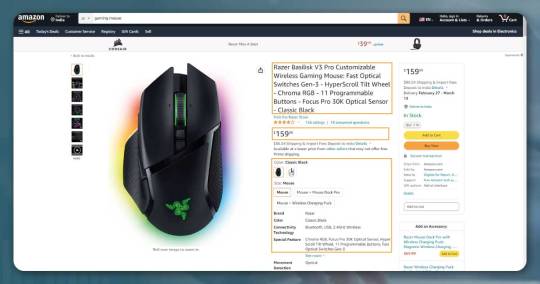
Frankly speaking, for MAP monitoring, all the data needed include product information and pricing.
Step 2: Choose a suitable technique to make data scrapers.
We need to do 10 data scrapers to collect data from corresponding markets and scraping data in a definite frequency.
A programmer need to write 10 scripts to achieve web scraping. Though, the inadequacies are:
Trouble in maintaining web scrapers if a website layout is changed.
Difficulty to cope with IP rotations as well as CAPTCHA and RECAPTCHA.
A supernumerary selection is the use of a data scraping tool made by Actowiz Solutions. For coders or non-coders, this can provide ample web scraping.
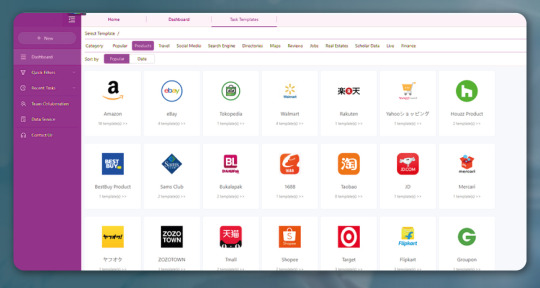
2. Automatic crawler: Also, the latest Actowiz Solutions’ scrapers enable auto data detection and creates a crawler within minutes.

Step 3: Running scrapers to collect data on 10 online markets. To get MAP monitoring, we need to scrape data at definite frequencies. So, whenever you prepare a scraper utilizing computer languages, you might have to start scrapers manually each day. Or, you could run the script with an extraction frequency function written with it. Though if you are using a web scraping tool like Actowiz Solutions, we could set the scraping time consequently.
Step 4: Subsequently after having data, whatever you should do is just go through the required data. Once you recognize any violating behaviors, you can react to it immediately.
Conclusion
For brands, MAP is very important. It helps in protecting the brand reputation and stop pricing war amongst resellers or retailers and offer more alternatives to do marketing. To deal with MAP desecrations, some ideas are there and you can search thousands of ideas online within seconds. Using MAP monitoring, it’s easy to take benefits from web extraction, the most profitable way of tracking pricing across various online markets, Actowiz Solutions is particularly helpful.
For more information, contact Actowiz Solutions now! You can also reach us for all your mobile app scraping and web scraping services requirements
9 notes
·
View notes
Text
What Impact Does Implementing the Six Pillars of Digital Shelf Success Have on CPG Sales?
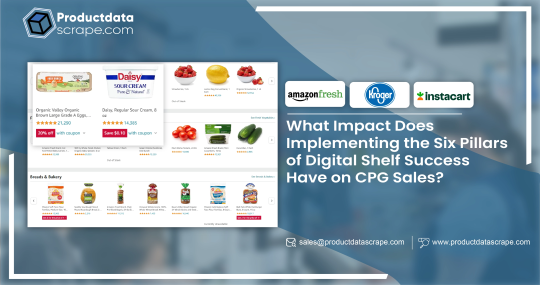
The digital shelf has emerged as a pivotal battleground for consumer packaged goods (CPG) companies in the rapidly evolving retail landscape. By 2024, digital retailing is undeniable, with a projected 60% of consumers transitioning to online grocery shopping by 2025. Concurrently, the CPG industry witnesses a surge in adopting cutting-edge retail technology and AI. Predictions suggest that 45% of CPG firms will integrate advanced technological solutions into their workflows by 2024, with expectations of doubling by 2025, highlighting rapid digital transformation. This shift underscores the critical role of e-commerce data scraping and the digital shelf in capturing valuable CPG data, which is pivotal for CPG eCommerce success. The blog delves into strategies, best practices, challenges, and the role of analytics in retail strategy in 2024.
Navigating the Digital Shelf: Choosing the Right Path for CPGs
In the ever-expanding digital retail landscape, achieving visibility on the digital shelf has become paramount for consumer packaged goods (CPG) brands. Selecting the appropriate eCommerce channels is now crucial for sustained growth.
According to a 2024 consumer buying behavior report, Google Search initiates 65% of shopper journeys, closely followed by Amazon. These platforms are vital for CPG brand sellers, illustrating the significance of the Digital Shelf. Additionally, brand websites kickstart over 10% of shopper journeys. Direct-to-consumer (DTC) sales are projected to surpass $167.55 billion in 2024, with Walmart leading in grocery eCommerce over Amazon. Instacart, boasting a vast network spanning 750 million products from 85,000 stores, presents a significant player. With its expansive reach and introduction of Kroger Marketplace, Kroger offers substantial opportunities for food and beverage brands. Walgreens and CVS draw a sizable digital audience in the drugstore category. These brands exemplify the diverse digital shelf ecosystem, illustrating the myriad opportunities and challenges for CPG brands in the digital realm.
CPG brands can leverage grocery data scraping services to capitalize on these opportunities, gather valuable insights, and optimize their digital shelf presence.
6 Strategies for CPG Success in the Digital Shelf Era
As online shopping becomes increasingly prevalent, mastering the digital shelf is paramount for consumer packaged goods (CPG) brands aiming to thrive in today's competitive landscape. Private-label brands pose formidable competition to established CPG products, constituting a significant portion of grocery sales, especially in regions like Europe. Moreover, emerging digital-first startups present new challenges to traditional retailers, emphasizing the need for a robust digital strategy.
In this context, the ability to scrape CPG data is critical to a successful digital strategy. By gathering insights from various sources, including competitor pricing, consumer preferences, and market trends, brands can make informed decisions to optimize their digital shelf presence. Whether monitoring competitor pricing, analyzing consumer behavior, or identifying emerging market trends, scraping CPG data provides brands with valuable insights to stay competitive and adapt to evolving consumer demands.
Elevating Product Content Optimization
With countless alternatives available to consumers, securing top rankings on eCommerce platforms is essential. Most shoppers limit their searches to the first page of results, with a significant portion favoring organic listings. Crafting compelling, SEO-optimized product listings is crucial for enhancing visibility and attracting potential customers. Incorporating trending keywords naturally and optimizing for platform-specific algorithms are vital strategies for outperforming competitors.
Ensuring Accuracy In Product Labels And Descriptions
Accurate and comprehensive product information is foundational to a successful digital shelf strategy. Only accurate or complete product details can lead to shopper satisfaction and cart abandonment. Providing detailed descriptions, high-resolution images, and immersive content like AR views enhances the consumer experience, ultimately driving conversions and fostering brand loyalty.
Prioritizing Mobile-Friendly Experiences
With significant online shopping occurring on mobile devices, brands must prioritize mobile optimization. Responsive design, fast loading times, and intuitive navigation are essential for delivering a seamless shopping experience across devices. Embracing a mobile-first approach and integrating digital and physical shopping journeys can enhance customer engagement and conversion rates.
Harnessing The Power Of Customer Feedback
Customer reviews and ratings are crucial in influencing purchasing decisions and building trust among shoppers. Integrating customer feedback into product pages enhances credibility and provides valuable insights for product improvement. Actively engaging with customer reviews demonstrates a commitment to customer satisfaction and strengthens brand reputation.
Implementing Dynamic Pricing Strategies
Effective pricing strategies are essential for maintaining competitiveness on the digital shelf. Brands must strike a balance between remaining competitive and preserving profitability. Data-driven pricing strategies, informed by sales data and competitor analysis, enable brands to adjust pricing in real time to capitalize on market opportunities and maximize profitability.
Competitor price monitoring plays a pivotal role in this process, allowing brands to stay informed about market pricing trends. By continuously monitoring competitor prices, brands can identify pricing gaps, react promptly to changes in the competitive landscape, and make strategic pricing decisions to maintain their competitive edge. This proactive approach ensures that brands adjust their pricing strategies effectively to meet market demands and achieve their business objectives.
Leveraging Advanced Analytics for Informed Decision-Making
Data-driven insights are fundamental to optimizing digital shelf performance. By analyzing consumer behavior, sales trends, and competitive landscapes, brands can make informed decisions to enhance their digital presence. Adopting advanced analytics tools empowers brands to refine content effectively, target demographics, and build a resilient retail strategy for long-term success.
By implementing these strategies, CPG brands can effectively navigate the digital shelf landscape, enhance visibility, and drive sales in an increasingly competitive online marketplace.
Conclusion: Implementing the six pillars of digital shelf success impacts CPG sales, driving notable improvements in visibility, user experience, and product presentation. By strategically leveraging these pillars, brands can enhance their presence in the digital marketplace, attracting more consumers and boosting conversion rates. Optimized visibility, seamless user experience, and compelling product presentation create a conducive environment for sales growth. Moreover, this approach fosters greater customer satisfaction and loyalty, reinforcing brand reputation and long-term success. Ultimately, implementing these pillars proves instrumental in maximizing CPG sales performance in the competitive landscape of the digital shelf.
At Product Data Scrape, ethical principles are central to our operations. Whether it's Competitor Price Monitoring or Mobile App Data Scraping, transparency and integrity define our approach. With offices spanning multiple locations, we offer customized solutions, striving to surpass client expectations and foster success in data analytics.
#DigitalShelfDataScraping#ExtractDigitalShelfData#ScrapeDigitalShelfData#GroceryDataScraping#WebScrapingShelfData#DigitalShelfDataCollection
0 notes
Text
youtube
Watch the American Climate Leadership Awards 2024 now: https://youtu.be/bWiW4Rp8vF0?feature=shared
The American Climate Leadership Awards 2024 broadcast recording is now available on ecoAmerica's YouTube channel for viewers to be inspired by active climate leaders. Watch to find out which finalist received the $50,000 grand prize! Hosted by Vanessa Hauc and featuring Bill McKibben and Katharine Hayhoe!
#ACLA24#ACLA24Leaders#youtube#youtube video#climate leaders#climate solutions#climate action#climate and environment#climate#climate change#climate and health#climate blog#climate justice#climate news#weather and climate#environmental news#environment#environmental awareness#environment and health#environmental#environmental issues#environmental justice#environment protection#environmental health#Youtube
15K notes
·
View notes
Text
Improve E-Commerce Feedback via E-Commerce Data Scraping
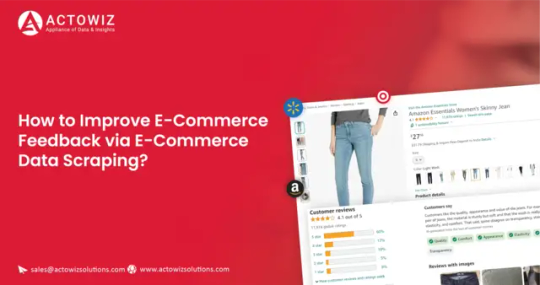
Introduction
Unlocking the potential of e-commerce data scraping is crucial for enhancing online business customer feedback analysis and product quality. With tools like Google review scraper and web scraping Amazon product reviews, businesses can extract valuable insights from customer feedback. Positive experiences and high-quality products foster trust, encouraging repeat purchases and brand loyalty. Businesses gain comprehensive feedback by scraping Walmart reviews, web scraping Target reviews, and other e-commerce data collection methods, enabling them to refine their offerings and improve customer satisfaction. Dive deeper into the world of e-commerce web scraping to harness its transformative power for your business.
Use the Power of E-Commerce Data Scraping to Extract Customer Reviews
Exploring e-commerce data scraping unveils a powerful strategy for businesses: extracting customer reviews. This process, commonly known as review scraping, involves utilizing web scraping techniques to systematically gather feedback, opinions, and ratings from diverse online platforms. The wealth of customer sentiment data available is immense, from e-commerce websites like Amazon, Walmart, and Target to social media platforms and review sites.
With tools like the Google review scraper and web scraping methods tailored for Amazon product reviews, businesses can efficiently gather and analyze large volumes of feedback. This data collection is comprehensive, significantly faster, and more accurate than manual compilation methods.
Uncover the undeniable benefits of e-commerce data scraping for feedback analysis. By leveraging this approach, businesses gain enlightening insights into customer preferences, pain points, and satisfaction levels. Armed with this knowledge, they can make informed decisions to enhance product quality, improve customer service, and optimize marketing strategies.
Look beyond immediate sales; e-commerce data scraping is about fostering a bright future for your business. It's about building a reputable brand, fostering customer loyalty, and driving sustained growth in the competitive online marketplace.
What Benefits Does Web Scraping Bring to Customer Feedback Analysis?
Enhanced Data Collection Efforts
Web scraping enables e-commerce businesses to gather customer feedback from a multitude of sources, including their own website, third-party review platforms, social media channels, online forums, and even competitor websites. By scraping data from diverse sources, businesses can access a comprehensive dataset, capturing a wide range of customer opinions and experiences. This holistic approach provides valuable insights that might be overlooked if only limited sources are considered.
Dynamic Analysis in Real-Time
In the fast-paced e-commerce market, timely responses to customer feedback are crucial. Web scraping facilitates real-time collection and analysis of customer opinions, allowing businesses to monitor and respond to feedback almost instantaneously. This agility is essential for addressing negative feedback promptly and leveraging positive trends to enhance customer satisfaction and loyalty.
Strategic Competitor Assessment
Web scraping extends beyond collecting feedback from its platforms; it also enables businesses to analyze competitor websites. By scraping data from competitor sites, e-commerce businesses gain insights into their competitors' product offerings, pricing strategies, and customer feedback. This competitive analysis allows businesses to benchmark their performance, identify industry trends, and uncover opportunities for differentiation.
Emotion Detection Analysis
Customer sentiment analysis is facilitated through web scraping, which efficiently gathers large volumes of feedback from various online sources. By classifying data into positive, negative, or neutral sentiments, businesses can gain insights into their customer base's overall mood and opinions. This sentiment analysis helps businesses gauge the impact of their initiatives, campaigns, and product launches, guiding strategic decision-making.
Pattern Recognition and Trend Identification
Web scraping empowers businesses to analyze large datasets and identify patterns and trends in customer feedback. By recognizing recurring themes, emerging demands, and seasonal preferences, businesses can make informed decisions about product development, inventory management, and marketing strategies. This proactive approach ensures alignment with customer needs and market dynamics.
Tailored Experiences
Customer feedback insights from web scraping enable businesses to personalize the shopping experience. By understanding individual preferences, pain points, and expectations, e-commerce platforms can tailor product recommendations, marketing messages, and user interfaces to meet specific customer needs. This personalized approach enhances customer engagement and fosters long-term loyalty.
Improving Customer Support
Analyzing customer feedback with scraped data helps businesses improve their customer service offerings. Businesses can enhance customer satisfaction and retention rates by identifying common complaints, addressing issues promptly, and refining service processes based on customer suggestions. This proactive approach to customer service fosters positive brand experiences and strengthens customer relationships.
Efficient Resource Management
Web scraping streamlines collecting and analyzing customer feedback, leading to significant time and cost savings for e-commerce businesses. By automating data collection and analysis tasks, businesses can gather insights more efficiently, allowing them to allocate resources more effectively toward strategic initiatives and business growth.
Forecasting Market Trends
Monitoring customer feedback trends over time allows businesses to predict market shifts and consumer behavior changes. Analyzing scraped data helps identify emerging trends, forecast demand, and outpace competitors in e-commerce. This insight aids strategic planning, inventory management, and competitiveness.
Incorporating Feedback into Business Strategies
The insights derived from customer feedback through web scraping are integral to shaping various aspects of business strategy. From product design and marketing campaigns to customer service initiatives and overall business strategy, integrating customer feedback ensures that business decisions are aligned with customer needs and market demands. This customer-centric approach drives innovation, fosters growth, and strengthens the e-commerce brand's position in the market.
In conclusion, web scraping is a game-changer for e-commerce businesses, revolutionizing how they collect, analyze, and leverage customer feedback. Businesses can gain valuable insights into customer sentiments, preferences, and behaviors by harnessing the power of web scraping tools like Google review scrapers and Amazon product review scrapers. This data-driven approach enables businesses to make informed decisions, enhance customer satisfaction, and drive sustainable growth in the competitive e-commerce landscape.
Web Scraping's Impact on Customer Feedback Analysis: A Practical Example
In the digital age, businesses constantly seek innovative ways to leverage data for growth and success. Web scraping and data analysis emerge as powerful tools in this endeavor, enabling businesses to harvest vast amounts of data from online sources and uncover actionable insights. This case study, exemplified by Actowiz Solutions, demonstrates the transformative impact of web scraping on customer feedback analysis.
The Dashboard: A Testament to Data-Driven Insights
Actowiz Solutions showcases a meticulously organized dashboard systematically curated through e-commerce data scraping techniques. This dashboard serves as a comprehensive repository of customer feedback, providing a multifaceted view of customer perceptions and experiences.
Chronological Review Analysis: Unveiling Customer Engagement Patterns
The dashboard's 'Total Reviews Over Time' graph underscores the significance to extract customer reviews. By tracking review trends over time, businesses can discern patterns in customer engagement and identify peak periods of activity. Moreover, this data enables businesses to evaluate the impact of external factors such as new product releases or promotional events, thereby informing strategic decision-making processes.
Sentiment Collection for Deeper Insights
Sentiments expressed in customer feedback hold invaluable insights into consumer perception. The 'Sentiment Distribution' metric on the dashboard categorizes feedback into positive, negative, and neutral sentiments, providing a nuanced understanding of public sentiment. Through e-commerce data scraping and subsequent sentiment analysis, businesses can decode the emotions behind customer comments, facilitating informed decision-making and targeted action plans.
Verification Status: Ensuring Authenticity in Feedback
Distinguishing between feedback from verified purchasers and unverified individuals is crucial for assessing the reliability of customer feedback. The dashboard's 'Verified vs Unverified Purchases' pie chart leverages data obtained through web scraping to delineate between these categories. Feedback from verified purchasers is often considered more trustworthy, making this distinction essential for accurate analysis and decision-making.
Analyzing Recommendations: Insights into Brand Perception
The dashboard's 'Customer Product Recommendation' section offers insights into the brand's standing with its consumers. By extracting instances of customer recommendations or criticisms through web scraping, businesses gain valuable insights into overall customer satisfaction and brand loyalty. This data informs brand perception assessments and enables businesses to effectively tailor their strategies to meet customer expectations.
Conclusion: Web Scraping as the Bedrock of Customer Feedback Analysis
In essence, web scraping forms the foundation for robust customer feedback analysis. By facilitating the rapid collection of extensive data across multiple vectors, web scraping empowers businesses to gain deeper insights into customer sentiments and preferences. The Actowiz Solutions dashboard is a testament to the transformative potential of web scraping, showcasing organized data ready for businesses to analyze and act upon. As businesses navigate the dynamic e-commerce landscape, harnessing the power of web scraping for customer feedback analysis is paramount to driving growth, enhancing brand reputation, and fostering customer loyalty.
Extracting Customer Reviews: Top E-Commerce Platforms for Web Scraping
Scraping customer reviews from various online platforms is not just a process, but a strategic move for e-commerce businesses. It's a key to unlocking customer sentiments and preferences, providing a wealth of valuable data for analysis. Popular websites like Amazon, Target, and Google are treasure troves of customer reviews, waiting to be explored.
Google Reviews
Google Reviews is a platform where customers candidly share their experiences and opinions about businesses and products. Leveraging Actowiz Solutions' Google Review Scraper, e-commerce businesses gain access to a wealth of customer feedback. This tool enables businesses to delve into customer sentiments, discerning likes and dislikes about their offerings.
Amazon
Being one of the largest online marketplaces worldwide, Amazon boasts an extensive range of products and customer reviews. For e-commerce enterprises, scraping Amazon product reviews proves invaluable for analyzing customer feedback. By extracting and scrutinizing this data, businesses obtain insights into product performance, customer preferences, and opportunities for enhancement.
Walmart
Walmart, a major retail powerhouse, serves as a rich source of customer feedback through its online platform. Through scraping Walmart reviews, e-commerce enterprises gain access to valuable insights from a broad customer demographic. This data isn't solely about comprehending customer perceptions; it's also instrumental in guiding product development initiatives and elevating overall customer satisfaction. Harnessing this wealth of feedback is a direct route to fostering business expansion.
Target
Renowned for its stylish and value-centric products, Target appeals to a distinct customer base. Through web scraping Target reviews, e-commerce entities can access feedback from this specialized market segment. Analyzing customer sentiments provides valuable insights into the preferences of fashion-forward shoppers. Armed with this understanding, businesses can customize their product assortments to align with customer expectations, ultimately boosting sales.
In essence, e-commerce data scraping from platforms like Google, Amazon, Walmart, and Target plays a pivotal role in customer feedback analysis. By leveraging the insights gleaned from these platforms, businesses can make informed decisions, refine their offerings, and ultimately enhance the overall customer experience.
Challenges and Solutions in Extracting Customer Reviews through Web Scraping
When you extract customer reviews through web scraping, it offers immense benefits for e-commerce businesses, yet it has its fair share of hurdles. Here's how to navigate the challenges and find practical solutions:
Anti-Scraping Measures: Navigating CAPTCHAs and IP Blocking
Websites often deploy anti-scraping measures like CAPTCHAs and IP blocking to thwart automated data extraction. Overcoming these obstacles requires technical expertise and continual adaptation to evolving defenses.
Legal Landscape: Ensuring Compliance in Web Scraping
Navigating the legal complexities of web scraping is crucial, as it varies by region and website. Partnering with expert service providers like Actowiz Solutions ensures adherence to legal regulations, mitigating potential legal risks.
Data Volume Management: Handling Large Data Sets Efficiently
Managing and processing large volumes of scraped data can be overwhelming without the right tools and infrastructure. In-house data management solutions may prove costly and resource-intensive, necessitating efficient alternatives.
Website Structure Changes: Adapting to Evolving Website Layouts
Frequent updates to website structures and layouts can disrupt scraping scripts, necessitating constant monitoring, and adjustments to maintain data collection integrity.
Solution: Outsourcing to Expert Web Scraping Service Providers
Outsourcing web scraping tasks to experienced service providers like Actowiz Solutions offers an optimal solution. With expertise in bypassing anti-scraping measures, ensuring legal compliance, efficient data management, and adapting to website changes, outsourcing enables businesses to focus on leveraging extracted data for analysis and decision-making.
Entrusting experts with web scraping tasks can help businesses effectively overcome the technical complexities and legal risks associated with in-house efforts. Outsourcing proves to be a cost-effective and efficient approach, empowering businesses to harness the power of customer reviews without the associated challenges.
Closing Thoughts on How Web Scraping Boosts Customer Feedback Analysis
Harnessing the potential of web scraping revolutionizes customer feedback analysis in the e-commerce realm. It empowers businesses to gather comprehensive customer feedback from diverse online sources, facilitating real-time insights, trend predictions, and personalized experiences. Despite its myriad benefits, web scraping presents challenges best addressed with expert assistance.
Actowiz Solutions stands as a trusted ally in navigating the complexities of web scraping. With our expertise, e-commerce businesses can optimize customer feedback analysis, staying agile in response to market dynamics and evolving customer preferences. Our partnership ensures businesses are equipped to thrive in the dynamic digital marketplace, delivering enduring success and customer satisfaction. You can also reach us for all your mobile app scraping, instant data scraper and web scraping service requirements.
#EcommerceDataScraping#ExtractCustomerReviews#GoogleReviewScraper#WebScrapingAmazonProductReviews#ScrapingWalmartReviews#WebScrapingTargetReviews#EcommerceDataCollection
0 notes
Text

Use Walmart Product Data Scraper to Scrape Walmart product information like descriptions, images, feedback, questions, prices, and shipping details. You can specify the country, language, and region for shipping.
Know more >
0 notes
Text
NMLS Data Scraping

NMLS Data Scraping is a powerful tool that can transform the way you do business. By extracting data from the Nationwide Multistate Licensing System (NMLS), you can gain access to a wealth of information that can help you make informed decisions and drive growth. With NMLS data scraping, you can gather data on mortgage companies, loan officers, and other professionals in the mortgage industry. This data includes licensing information, employment history, disciplinary actions, and more. By scraping this data, you can analyze trends, identify opportunities, and stay ahead of the competition.
Whether you are a mortgage company looking to identify top-performing loan officers, an investor evaluating potential opportunities, or a regulatory agency monitoring compliance, NMLS Data Scraping can provide the insights you need to succeed.
List of Data Fields
When scraping NMLS data, you have access to a wide range of data fields. Some of the common data fields include:
- License Number: Each professional in the NMLS system is assigned a unique license number. This allows you to easily identify individuals and track their licensing status.
- Employment History: NMLS data scraping provides information on the employment history of loan officers and other professionals. This includes details such as previous employers, positions held, and dates of employment.
- Disciplinary Actions: If a professional has faced disciplinary actions, NMLS data scraping can provide details on the nature of the violation, the disciplinary action taken, and the outcome of the action.
- Education and Training: NMLS data scraping can also provide information on the educational background and training of professionals. This can be valuable for evaluating the qualifications of loan officers and identifying top performers.
These are just a few examples of the data fields available through NMLS data scraping. Depending on your specific needs, you can customize the scraping process to gather the information that is most relevant to your business.
The Benefits of NMLS Data Scraping
There are numerous benefits to using NMLS data scraping for your business. Here are just a few:
1. Improved Efficiency: By automating the data collection process, NMLS data scraping saves you time and resources. You no longer have to manually search and enter data, allowing you to focus on more important tasks.
2. Enhanced Decision-Making: With access to a vast amount of data, you can make more informed decisions. Whether you are evaluating loan officers, analyzing market trends, or identifying potential risks, NMLS data scraping provides the information you need to make data-driven decisions.
3. Competitive Advantage: By staying up-to-date with the latest industry trends and monitoring your competitors, you can gain a competitive edge. NMLS data scraping allows you to track market changes, identify emerging opportunities, and adjust your strategies accordingly.
4. Regulatory Compliance: For regulatory agencies, NMLS data scraping can streamline the monitoring and enforcement process. By automating data collection, you can easily identify non-compliant individuals or companies, ensuring a more efficient regulatory process.
These are just a few of the benefits that NMLS data scraping can offer. Whether you are a small business or a large enterprise, leveraging data scraping technology can give you a significant advantage in the mortgage industry.
Best Data Scraping Service Provider
Walmart Product Price Scraping
Google Hotels Data Scraping
Overstock Product Information Scraping
Realestate.com.au Property Price Scraping
Indeed Job Listings Scraping
Movoto Property Prices Scraping
Etsy Product Prices Scraping
Homefinder Real Estate Data Scraping
Target Product Details Scraping
Extract Property Prices from Realtor
Conclusion
In conclusion, NMLS data scraping is a powerful tool that can revolutionize your business. By extracting data from the NMLS system, you can gain valuable insights, improve decision-making, and stay ahead of the competition. Whether you are a mortgage company, an investor, or a regulatory agency, NMLS data scraping can provide the information you need to succeed. With its ability to automate data collection and provide real-time updates, NMLS data scraping is an essential tool for any business operating in the mortgage industry.
To unleash the power of NMLS data scraping, consider partnering with a professional data scraping service like Datascrapingservices.com. With their expertise and experience, they can help you leverage NMLS data to drive growth and achieve your business goals.
Website: Datascrapingservices.com
Email: [email protected]
#nmlsdatascraping#nmlsloanofficerdatascraping#emaillistscraping#emaillistprovider#datascrapingservices#webscrapingservices#webscrapingexpert
0 notes
Text
How to Achieve Retail Success in 2024: Mastering Economic Pricing Strategies
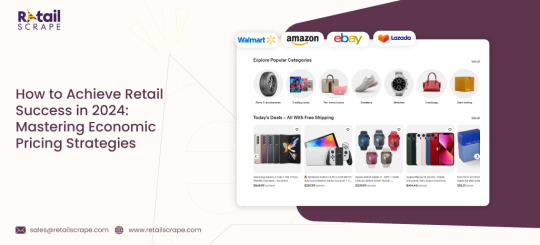
Introduction
In the recession and the aftermath of the pandemic, global households are trimming their budgets for the foreseeable future. In response, businesses are adapting by targeting an expanding demographic of budget-conscious consumers. The pervasive threat of competition affects every industry, with the ease of product comparison and research in today's market. Even emerging brands swiftly seize the spotlight, outshining retail giants. The pivotal factor in 2023 lies in effective, consumer-centric pricing strategies. With mass production becoming the norm in large-scale retail, many businesses are capitalizing on lower production costs to provide economically priced products. This blog delves into the nuances of economic pricing strategies, shedding light on how to harness them for your brand. It incorporates keywords like economic pricing strategies, scrapes price-conscious shoppers, retail pricing strategies, price intelligence, competitive pricing strategy, and e-commerce web scraping.
What is Economic Pricing and How Does it Operate?

Economic pricing stands as a strategic pricing approach rooted in mass production and economies of scale. This method involves setting low prices with narrow profit margins. The efficacy of economic pricing hinges on substantial sales volumes, where modest margins aggregate into substantial profits. The foundation of this strategy lies in reduced production costs, facilitated by minimal overheads like marketing and advertising expenditures. The primary objective is to attract highly price-conscious consumers who are most responsive to discounted and promotion-based offers. Consequently, economic pricing is frequently associated with generic products, as their value remains unaffected by straightforward price tags and positioning.
Illustrations of Successful Economic Pricing Strategies in Action
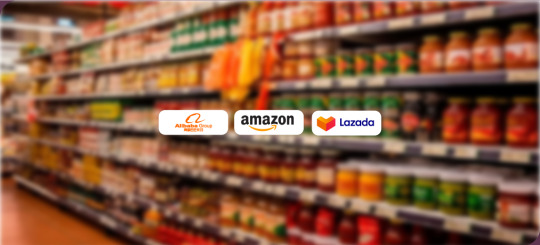
Significant retailers engaged in large-scale production or sourcing predominantly adopt economic pricing strategies. These entities encompass supermarkets with in-house brands, producers of generic pharmaceutical products, big-box stores, and even budget airlines. Catering to a broad audience, these suppliers and stores leverage high-volume sales to optimize profits.
In-house Brands: Amid the 2023 recession, heightened price sensitivity has made in-house budget brands increasingly appealing. Many shoppers gravitate towards these products due to their attractive price tags, particularly when compared to well-known brands and pricier alternatives. This trend is particularly evident in segments where generic, essential commodity products witness minimal brand loyalty. Costco stands out for its array of in-house products, dominating shelf space without hefty marketing expenditures.
Generic Pharmaceutical Products: Given the soaring costs of medical supplies in the USA, generic alternatives have gained significant popularity. Offering composition and manufacturing identical to regular medication, these duplicates present a reliable and comparatively cost-friendly choice for many American households.
Big-box Supermarkets: Massive retailers like Walmart have earned acclaim for offering the best deals and lowest-priced items among supermarkets. Their commitment to pricing products at reduced rates allows these stores to minimize margins while capitalizing on substantial sales volumes, constituting the bulk of their profits.
Online Third-Party Marketplaces: Leading e-commerce platforms like Alibaba, Amazon, Lazada, and others are celebrated for their remarkably budget-friendly prices. These marketplaces feature low-cost private-label products and consistently provide discounts and offers. While criticism is often directed at the perceived lower quality of these offerings, they remain a preferred choice for deal hunters seeking generic goods or brand duplicates—distinct from fraudulent sellers or counterfeit items.
Unveiling the Benefits of Economic Pricing: Streamlining Success for Retailers in 2024

The merits of economic pricing, particularly in the eyes of today's price-conscious consumers, are multifaceted. This pricing approach gains considerable traction for generic commodities. In the realm of in-house brands, the absence or minimal need for a marketing budget is a standout advantage. Major retailers can seamlessly position these products alongside well-known brands without incurring additional costs, alluring deal hunters. The expense of customer acquisition diminishes significantly for these items and brands while maintaining a consistent presence and generating steady sales. Additionally, implementing this pricing strategy is streamlined, leveraging existing production capabilities, supplier relationships, and distribution networks.
The appeal of economic pricing is accentuated in online markets, where scraping price-conscious shoppers becomes essential for retailers. Employing retail pricing strategies rooted in economic pricing enhances a brand's competitive pricing strategy and bolsters its position in the market. Furthermore, the incorporation of price intelligence through ecommerce web scraping allows businesses to adapt and optimize their pricing strategies based on real-time market dynamics. In essence, economic pricing caters to the preferences of cost-conscious consumers and provides retailers with a practical and efficient approach to navigating the competitive landscape.
Exploring the Drawbacks of Economic Pricing in Retail Strategies
Economic pricing, while presenting advantages, comes with significant drawbacks. One central area for improvement is its heavy reliance on a consistent and substantial customer base. These products often need to be perceived as higher quality, particularly compared to well-established brand-name competitors. An illustrative case is evident in the diaper market, where P&G's "Pampers" is a branded option at $26.99 for an 84-pack, while Target's "Up & Up" brand offers a similar product at $14.99 for 124 diapers. Despite the apparent price disparity for identical items, households may opt for the branded alternative driven by brand loyalty and peer recommendations, favoring the familiarity and perceived value of the branded product.
This phenomenon highlights a critical drawback of economic pricing – the potential struggle to overcome entrenched consumer preferences and perceptions. While economic pricing seeks to attract through affordability, it may encounter resistance from consumers who prioritize brand loyalty and perceived product value. In a market where perception heavily influences purchasing decisions, the challenge for retailers lies in balancing the appeal of cost-effectiveness with the need to establish and maintain perceived product quality. The delicate equilibrium between pricing strategies and consumer perceptions becomes pivotal for retailers navigating the complexities of economic pricing.
Navigating Optimal Pricing Strategies for Your Brand
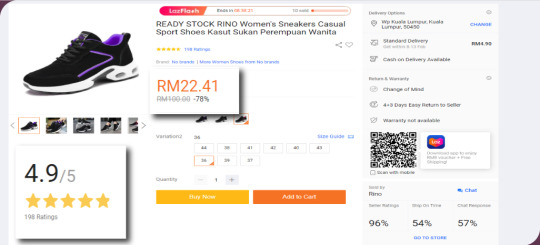
Determining the ideal pricing strategy for your brand is a nuanced process devoid of a one-size-fits-all solution. Selecting a pricing strategy necessitates thoroughly examining customer data, purchase history, product lineups, industry dynamics, and seasonal variations. There is no denying the complexity inherent in this decision-making process.
Economic pricing strategies are a viable option in this landscape, especially when targeting price-conscious shoppers. Employing retail pricing strategies rooted in economic pricing requires a deep understanding of market dynamics, and this is where price intelligence plays a pivotal role. By leveraging ecommerce web scraping techniques, retailers can gain valuable insights into competitive pricing strategies, enabling them to fine-tune their approach and stay ahead in the market.
Retail Scrape offers a valuable resource for those keen on exploring price optimization solutions tailored to their brand. Book a demo today to delve into the intricacies of economic pricing, scrape price-conscious shoppers effectively, and unlock the potential of competitive pricing strategies that align with your brand's objectives. With Retail Scrape, make informed decisions to optimize your pricing strategy in the ever-evolving retail landscape.
know more :
https://www.retailscrape.com/retail-success-pricing-strategies.php
#RetailSuccessin2024#CompetitivePricingStrategy#EconomicPricingStrategies#RetailPricingStrategies#PriceIntelligence
0 notes
Text
youtube
Watch the 2024 American Climate Leadership Awards for High School Students now: https://youtu.be/5C-bb9PoRLc
The recording is now available on ecoAmerica's YouTube channel for viewers to be inspired by student climate leaders! Join Aishah-Nyeta Brown & Jerome Foster II and be inspired by student climate leaders as we recognize the High School Student finalists. Watch now to find out which student received the $25,000 grand prize and top recognition!
#ACLA24#ACLA24HighSchoolStudents#youtube#youtube video#climate leaders#climate solutions#climate action#climate and environment#climate#climate change#climate and health#climate blog#climate justice#climate news#weather and climate#environmental news#environment#environmental awareness#environment and health#environmental#environmental issues#environmental education#environmental justice#environmental protection#environmental health#high school students#high school#youth#youth of america#school
16K notes
·
View notes